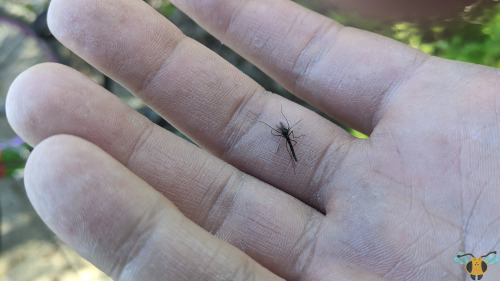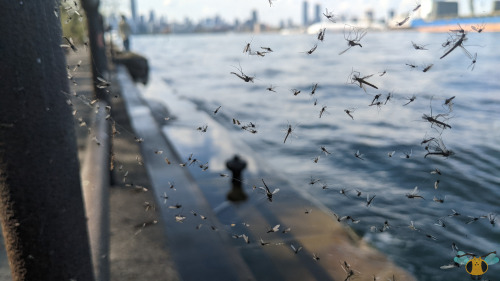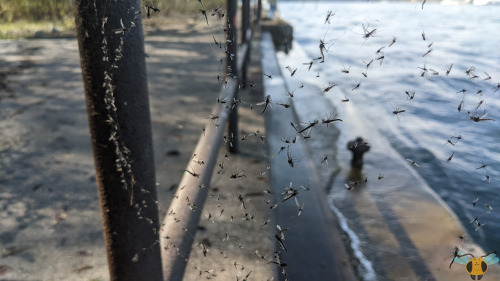Midges - Family: Chironomidae | Species unknownAfter last week’s video post showcasing these i
Midges - Family: Chironomidae | Species unknownAfter last week’s video post showcasing these insects and their dancing formations over flowing water, this week we’ll attempt to get a closer look at them. It’s funny how the insects seem of reasonable size when you actually hold or see one, but when looking at them against the sky, one could be mistaken to thinking that it’s just birds flying in the distance. Each speck represents one Midge flying around so there’s probably 50 or so in picture 2. Those are rather small, and actually very close, but not all Midges are so tiny. Some are larger, and there is a size difference between females and males. Based on what I’ve read females are larger, but the males have plumose antennae. More than a decoration for their appearance, they (similar to Moths) use those feathered antennae to help them find a mate. Looking at the individual I’ve caught in Pictures 1 and 10, you can get a closer look at the features. Take note of the elongated body, shortened wings, feathered antennae and the positioning of the front legs. Though a bit roughed up from the capture, this hardy fellow was able to fly away after a few pictures. These are non-biting Midges, which may imply that there are biting Midges…and yes there are. Those belong to the family Ceratopogonidae and some do bite humans.As said earlier, they are drawn to bodies of water and moist environments as those places are beneficial places for the placing of eggs. The adult Midges need to get to work quickly as they usually live for a few weeks, if that long. Depending on the specie, they may not even feed when they are adults (some take honeydew or nectar), so the timing is quite urgent. Fortunately, they can mitigate most risks with simultaneous emergence (again, it depends on the specie) and the emerge of massive swarms. While annoying for boaters, bikers and visitors of a waterfront, the sheer numbers of Midges allow more than enough to survive to ready the next generation, even if a few get caught in spider webs or eaten by other predators. They lack defenses aside from their flying prowess, and since they’re often mistaken for Mosquitoes, they can be eaten or swatted at with little thought. While similar in appearance to Mosquitoes and closely related to them, these non-biting Midges don’t have a taste for blood and have a few differences that you can use to tell them apart, all of which can be found in the first paragraph of this post. The front legs should stand out immediately, and as such both insect groups have different postures when landed. Pictures were taken on May 11 and 15, 2022 with a Google Pixel 4. -- source link
#ontario insect#midge swarm#black midge#diptera#insect#toronto#may2022#non-biting midge#non-biting midge#unidentified









